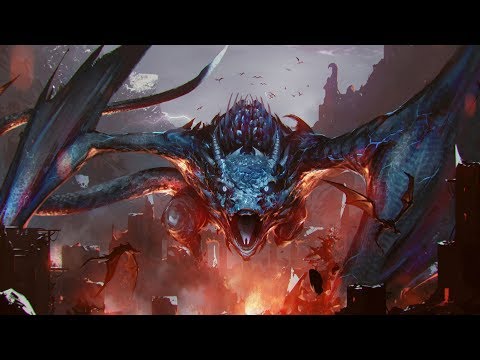Music is one of the most common forms of art we will encounter in our day to day lives. But why? What makes music such a powerful and universal form of art that people all over the globe enjoy it together?
Music is everywhere. From the corporate jingle in an elevator to the music in your Grande Vegas online casino app, to the soulless music playing in a department store.
Some might say it’s because of lyrics, or tunes, or any number of other reasons that can make music so universally beloved. The truth is, it is all of those reasons. But, what specifically about those things comes together to make a beautiful piece?
A Story Without Words
Many people might not think about it, but music can be a very powerful storytelling device even when there is not a single lyric in it. Simply by sticking different sounds and rhythms together, we can paint a picture with tunes!
First, I will give an example where just the music is a storytelling device. Imagine a piece of music titled something like, “A Battle of Dragons” or something similar.
Just by giving that first hint to what the music is about in the title, the music itself can paint a beautifully imaginative scene in our minds.
Picture this, the piece titled, “A Battle of Dragons,” starts with a slow build. Some gentle orchestral tones. This could conjure images of a peaceful valley or mountainside or any other place. The music begins to crescendo, getting more and more ‘big.’ Finally it climaxes and the pace speeds up and clashes! Symbols crash, and the music gets louder! This will be your actual ‘battle.’ You could picture in your mind great dragons clashing in a valley. Breathing fire and destruction all around. The great scally beasts tear into each other and fight viscously.
Finally, the music climaxes and begins to slow down. This brings to mind an idea of the battle being over. One dragon emerges triumphantly! But then, the music slows more and takes on a melancholic tone. The destruction of the valley by the two dragons takes full form. What destruction they have wrought! Trees and shrubbery are in flames, animals scatter in terror, and the earth is scarred with scratches, craters, and scorch marks. The corpse of a bright red dragon lies motionless on the ground.
All of this can emerge simply from an auditory experience! There was not a single word said, yet such vibrant and emotional images flash in our minds.
“Everywhere at the End of Time”
Not only can a story be told via music, but a complete experience can be shared only through music and sound. There is not a better example of this than, “Everywhere at the End of Time” by the Caretaker.
This piece of music, “Everywhere at the End of Time,” is supposed to be a musical way to experience the terrible effects of dementia or memory loss. The music represents your memory, and it beautifully displays the horrors of losing who you are.
“Everywhere at the End of Time” is separated into 6 stages. The first stage represents the very beginning of memory loss. The music is clear and jovial. It represents a desire to hold onto your memories, and a denial that something is wrong. You could enjoy the music found in stage 1 as it’s rather pleasant like a kind of nice dream.
Stage 2 is when the music begins to grow a bit distorted. You might hear slight static and crackles, but nothing too bad. This is supposed to be a recognition and rejection that something is wrong. You know you are going to begin losing yourself, but you don’t want to admit it. Everything will be fine. Everything is going to be okay…
Stage 3 and it is abundantly obvious something is wrong. The music sounds distorted and far away. It also sounds… not quite right? It is familiar, but also alien. This will be the last clear and recognizable music before complete confusion sets in. You are gripping to your memories and you want more than anything to keep them. However, it is too late for that.
Stage 4 comes around and you lose your ability to recall the music. It’s like a nice smell in the wind. You see it for a second, but then it is gone. But when it does come, at least it will be recognizable. In this stage, the music is overwhelmingly more distorted. The music will pop into clarity on occasion and you want it to stay, but it goes. You can’t keep a coherent rhythm for very long.
Stage 5 rolls around and it is just confusion and the unfamiliar. Most of the time the music will be unrecognizably distorted and static filled. There will be crackles and skips and it will be hard to follow. When music does come, it will be different. The same genre? But, they will not be the same tunes. The music doesn’t sound like previous tunes like in the other stages. Instead, it will be alien. The long-gone serenity of the music leaves you only with the horror of what you now know: it’s too late. You can’t even recall the most important things.
Finally, we come to stage 6. This is the final stage, and the most haunting. I have not mentioned titles for tracks in this album before, but I think they are the most terrifying in stage 6. Stage 6 represents losing yourself. This is beautifully phrased in a track called, “A Confusion so Thick You Forget Forgetting.” The music is gone. Was there even music in the first place?
Every once in a while, a snip of music will show itself amongst the noise, and it will be like a breath of fresh air. You beg and plead for it to stay but it doesn’t. You are left with the noise.
You want to hold onto the memories of yourself, but there’s no point. It is impossible. How can you remember yourself, when you can’t even remember that there is something to remember? Eventually, you come to the last track in stage 6 which is titled, “Place in the World Fades Away.” At first, it is just noise. Then suddenly, there is music.
The music has come back! However, it’s different. It is distorted, yet still clearer than before. It sounds a bit like a funeral dirge. You don’t remember who you were, but you can get a sense of where you are going. The people around you are unrecognizable, but you can tell by their tones and expressions that something is wrong.
Suddenly, the music cuts. There is no music. There is no noise. There is only silence. There is nothing to remember or forget because there is nothing. It’s simply over.
“Everywhere at the End of Time” is quite possibly one of the most emotional and moving pieces of music I have ever heard. It was a wonderful show of how you can use music in and of itself as an art form.
Not a single word was said throughout the entirety of this album, yet the thoughts and emotions it evokes are more powerful than any speech I’ve heard. Sometimes it is just truly that things are beyond words.

















